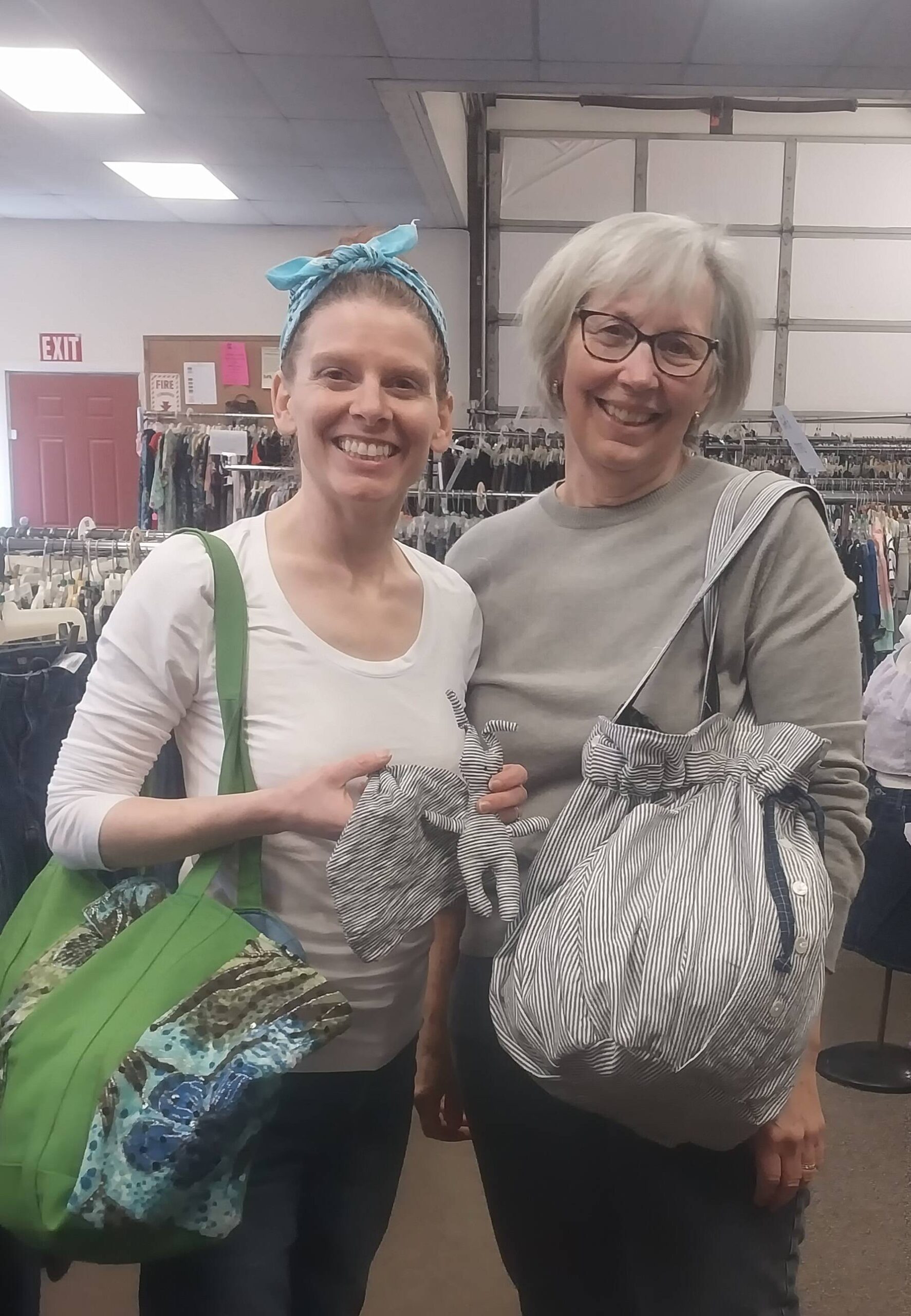By Tiffany Straza
“Shopping second-hand is a huge help for our planet, and we love to show people how easy it is to find affordable clothes that suit them,” said Dr. Tiffany Straza, Board Member. “Almost a tenth of the trash sent to landfills in the USA is textiles from clothes and linens, but it doesn’t have to be that way.”
In the 1970s, when Ginger Haberman, the chair of the Forks Disaster Relief Committee at the time, started stocking second-hand clothes, about 2 million tons of textiles were thrown away in the USA each year, according to estimates from the Environmental Protection Agency.
The waste is increasing. By 2018, landfills received 11.3 million tons of textiles, forming 8% of all municipal solid waste landfilled. The EPA estimates that the recycling rate for textiles in clothing and footwear is about 13%: in other words, almost 9 garments out of every 10 are just thrown away.
“There are three major ways that we help give clothes and home textiles new life: passing them on to another home, repairing them, and – when they are no longer useful for their original purpose – sending them to textile recycling,” said Straza. “In the past, we’ve had to drive far away to send discards to a place where they might be recycled. We are now exploring a new non-profit business start-up that will allow us to hire folks to upcycle our discard textiles into new products.”
That recycling includes upcycling to give new life to damaged goods. Thanks to the Precycle WA initiative from Zero Waste Washington and the Seattle Good Business Network, with support from the Washington Department of Ecology, Forks Disaster Relief has created a team opportunity for entrepreneurship training and a pitch competition.
“Our team is rapidly exploring ways to create local employment while addressing our textile waste problem,” said Sena Engeseth, board member. “We want to hear from the community about what they want to make, buy or participate in to save these fabrics – and all of the water, energy and time that went into them.”
Free repair workshops, with volunteer guides and available tools like sewing machines and thread, are held on the first Wednesday of each month at Ginger’s Closet. Since launching the monthly workshops in July 2022, more than 40 garments have been restored for resale in addition to garments repaired for clients.
Buying your clothing secondhand has real environmental benefits. Re-using 1 kilogram of clothing saves 25 kilograms of carbon dioxide, according to a study in Spain. Making sure that a piece of clothing is worn for just nine more months would reduce its carbon, water and waste footprint by 20–30%. An increase of 10% in second hand sales could save 3% of carbon emissions and 4% of water, according to data from the report Valuing our clothes: the cost of UK fashion, published by WRAP in 2017.
Shopping at Ginger’s Closet has other benefits, too.
“Whether it’s because you are concerned about our environment, you want to spend your dollars locally, want to support our disaster relief functions, or just want to look amazing, we want to welcome you to our shop,” said Layla Rawls, Board Member. “The thrift shop part of our work provides funding for its own operation but also to provide a range of services from Forks Disaster Relief, including financial aid.”
Ginger’s Closet is entirely supported by donations of clothing, footwear, accessories and home textiles. Volunteers and one part-time staff member maintain the inventory, sales of which fund the financial aid delivered by Forks Disaster Relief.
According to Vasey, “The best way to keep these community services going is to tell others about them—and to come find a new outfit at Ginger’s Closet!”
All are welcome to shop at 181 Bogachiel Way from 12 noon to 4 pm every Monday, Wednesday, Friday and Saturday. On May 1st, the open hours will be extended to 11 am to 6 pm on the same days.
For more information, please contact: forksclothingbank@gmail.com



